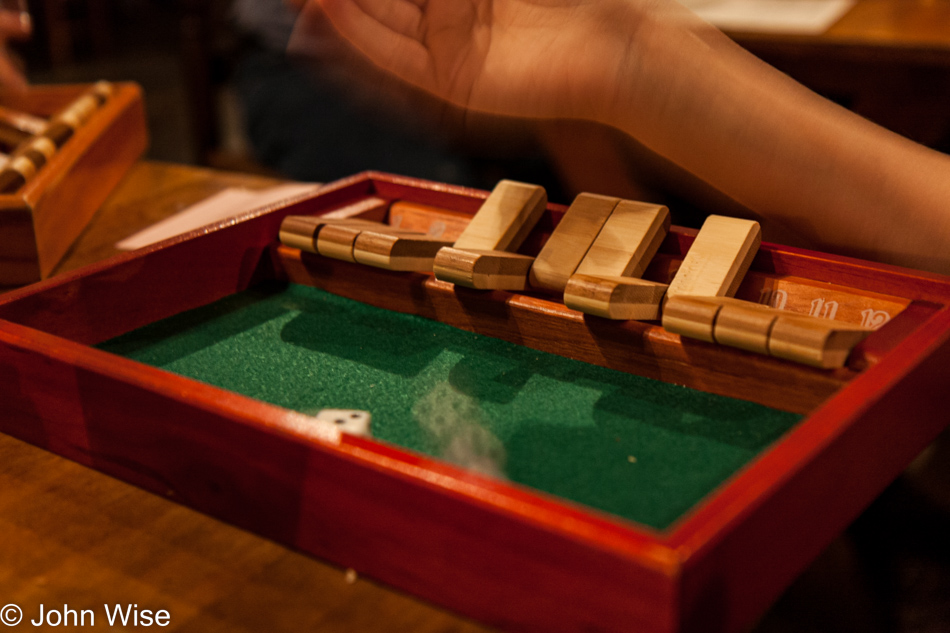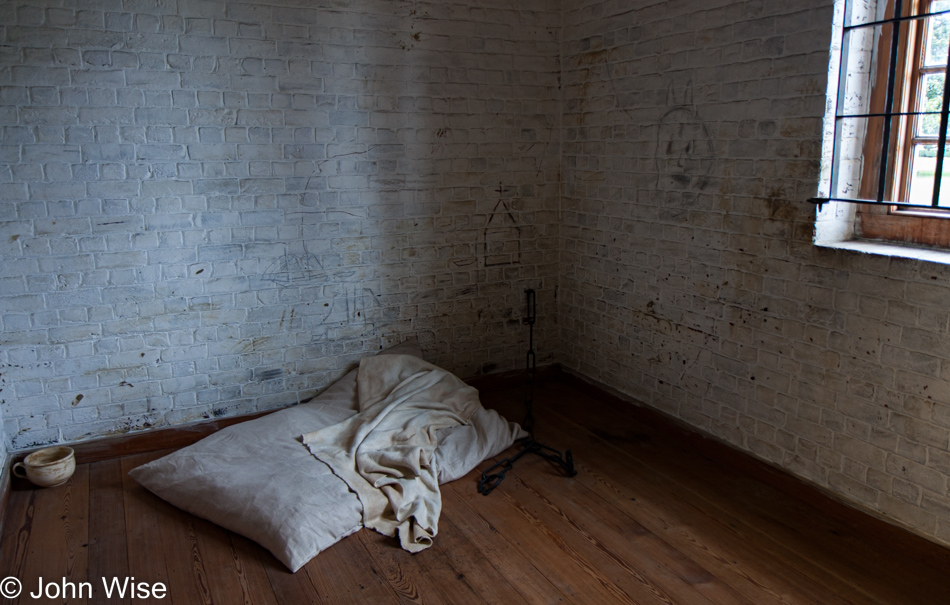
It being Saturday, it was time for Jessica’s chains to come off so we could take her from the Public Hospital for some fresh air. She’s been making progress since thinking she had turned into a crab bent on dismembering her father, and her doctors felt it was a good time to allow her a small taste of freedom. This old hospital built in 1773 for the mentally ill is now a museum here in Colonial Williamsburg and was one of our first stops on a busy day. Someone had made the best recommendation for a great breakfast at the Old Chickahominy House, and I do mean great; their biscuits are otherworldly.
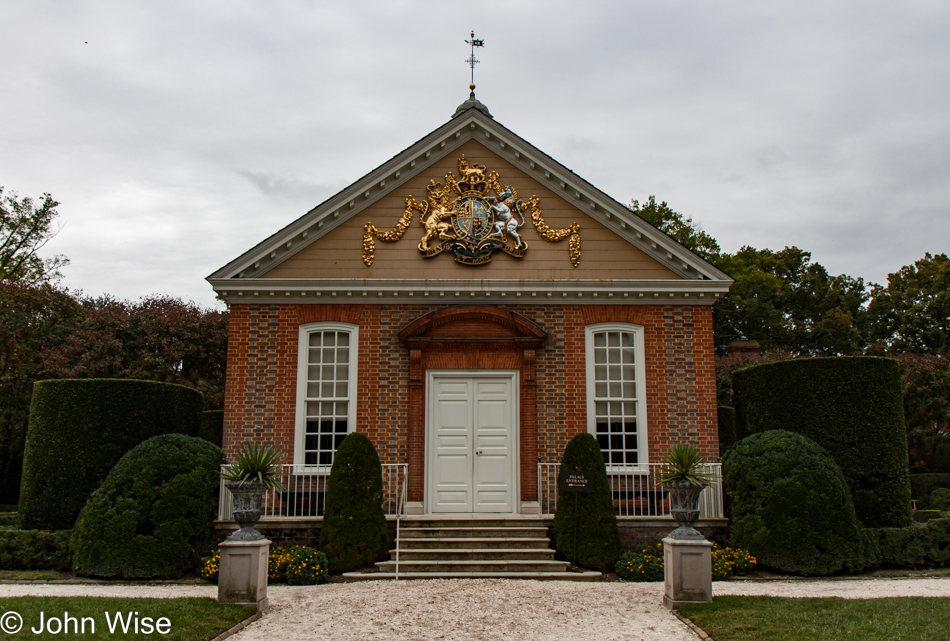
Arriving early we were offered the opportunity to miss the otherwise long lines that form to tour the Governor’s Palace. Just in case you were wondering, my daughter wasn’t really chained to the wall in a mental hospital; she was actually stuffed in the trunk of our car overnight.
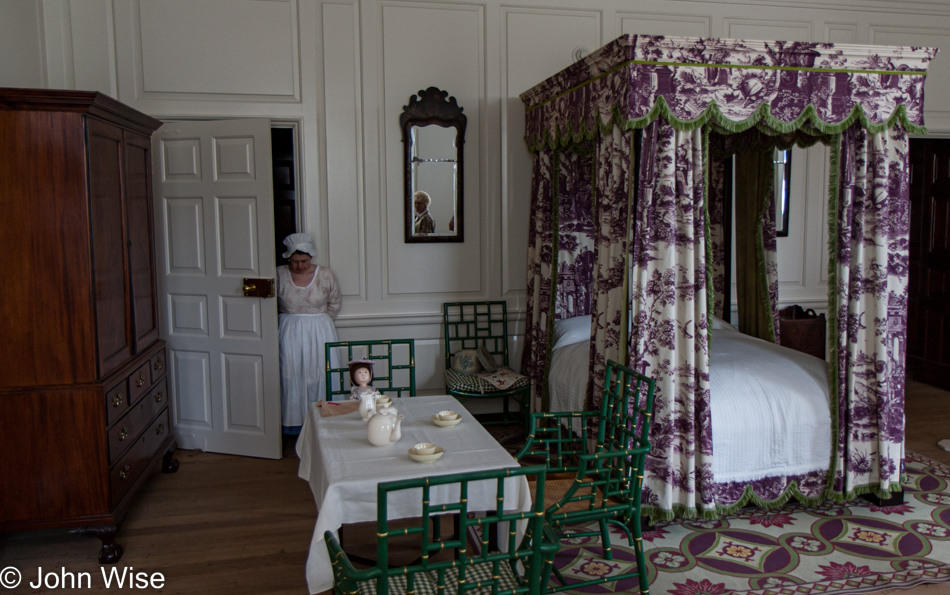
When Caroline, her mom, and I were here back in May, we didn’t have the time to visit the Governor’s Palace, which was unfortunate. On this visit, we learned that it was well worth buying the Colonial Williamsburg Admission Pass. The tour is conducted by guides in period dress who are very knowledgeable about the Palace and how it functioned in its day.
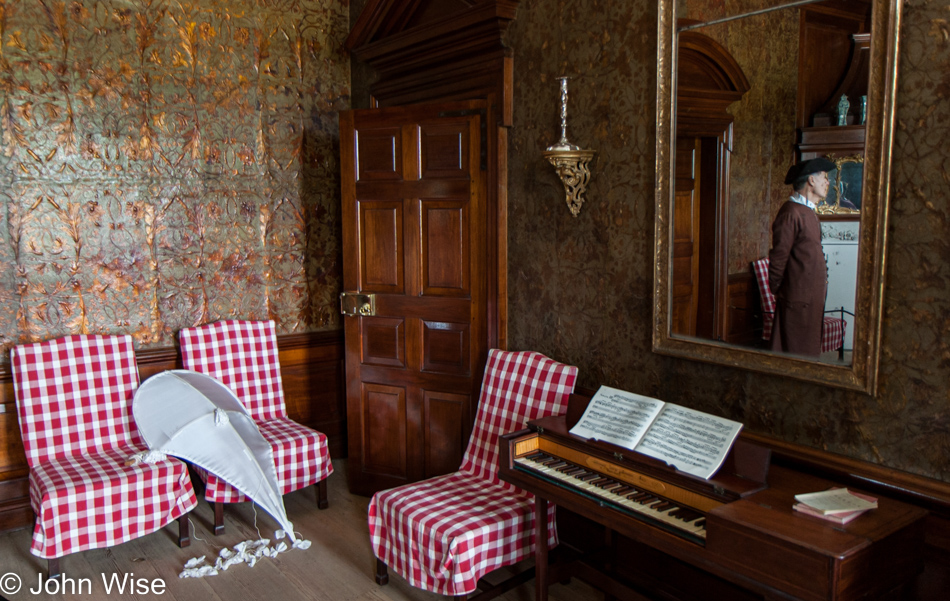
The last governor to reside here was Thomas Jefferson. Unfortunately, fire consumed the original structure, but the reconstructed palace offers a great feel for what had once been here.
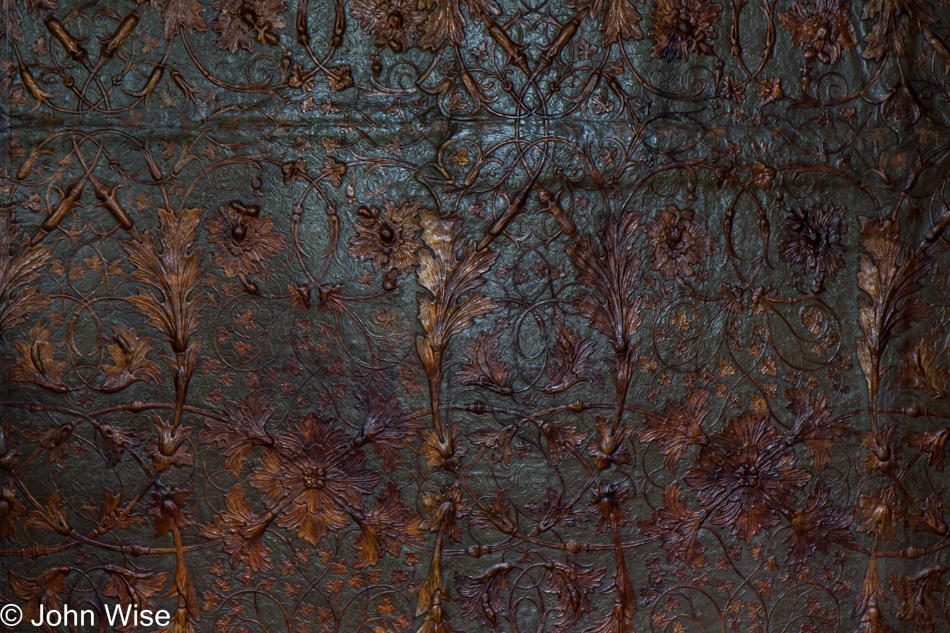
A close-up view of the wallpaper from the room above. This is the level of detail they’ve taken in these restorations. Speaking of the process of restoration and preservation, it was John D. Rockefeller back in 1926 who was inspired to take on the project of saving this important part of Colonial America.
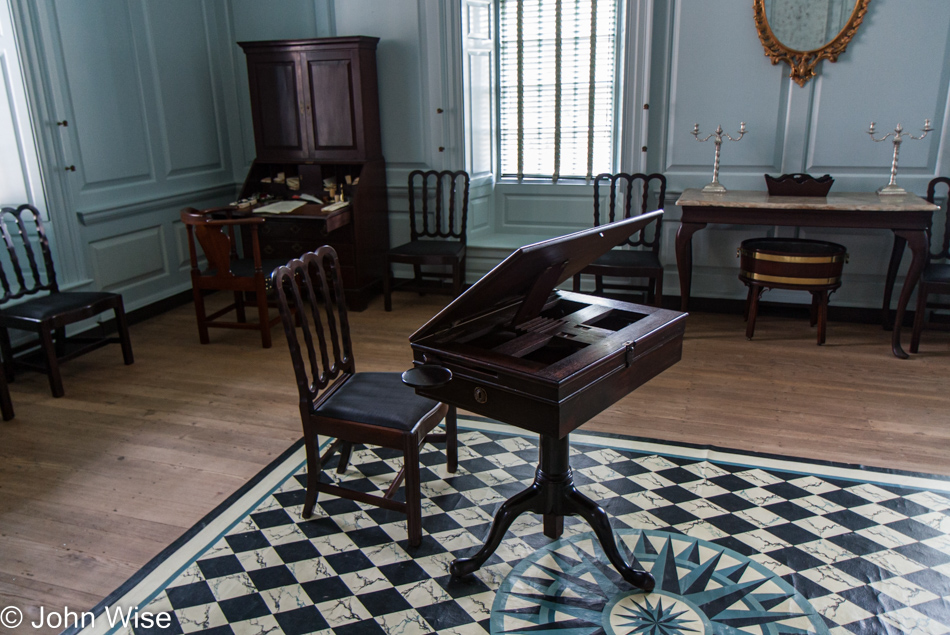
I can only imagine what it costs to maintain this herculean effort of preservation, so visitors have this opportunity to peer back into history.
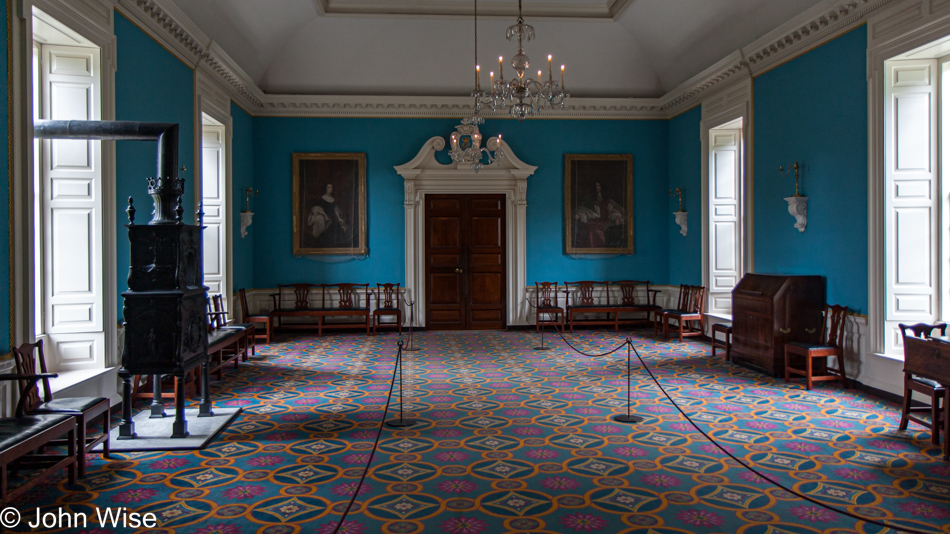
There is one downside to witnessing so much living history: can it survive capitalism? If the National Park system took over this historic district, it would likely strip the actors and reduce things to self-guided tours. Restaurants would be served by some ugly cafeteria-like contractor as it does with much of its food service. It is a kind of tragedy that a place like Colonial Williamsburg appears to be of not much interest to middle America. Maybe things would run better if it was more like the Ahwahnee Hotel in Yosemite (rooms there are $1,000 per night). The wealthy would take a greater interest in ensuring it was well-funded into the future.
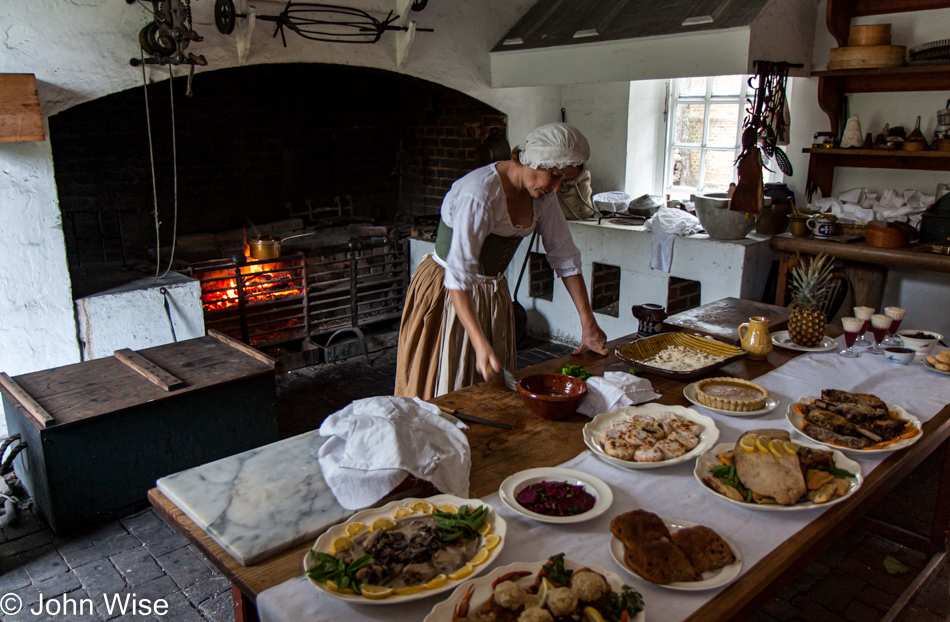
Seeing the kitchen at work really adds to the sense of the time some couple of hundred years ago.
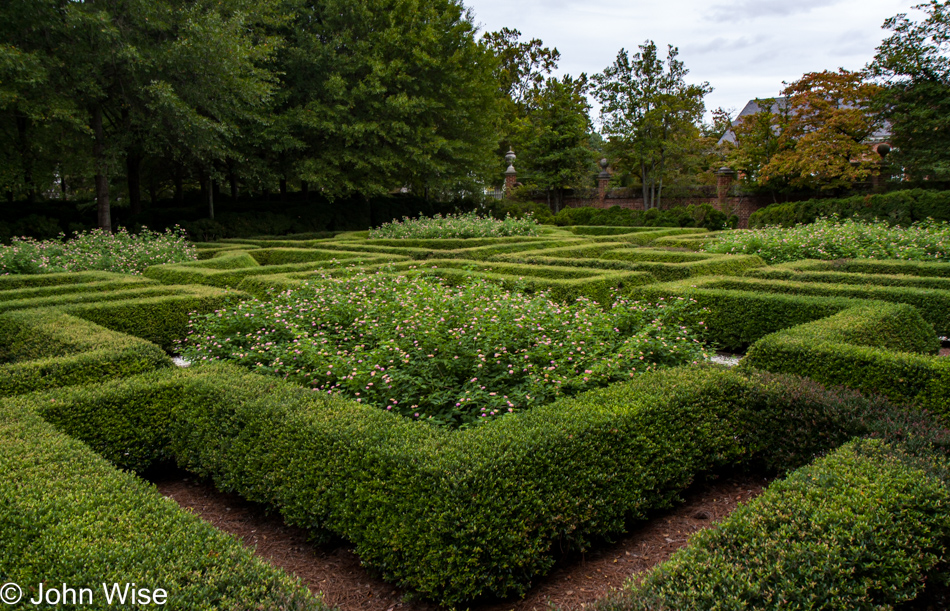
The gardens of the Governor’s Palace.
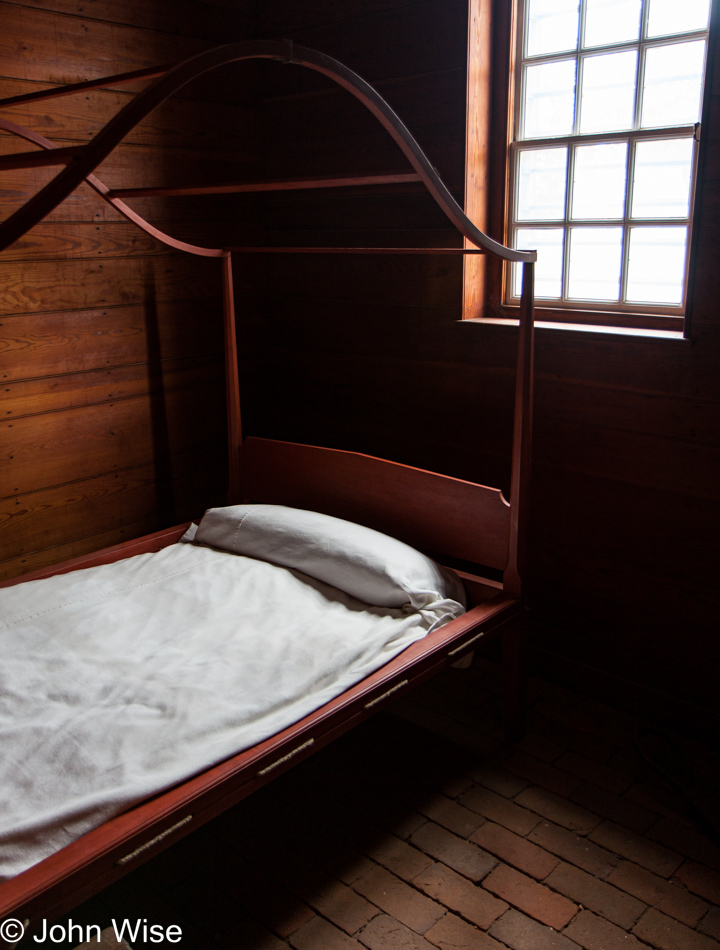
Servants quarters.
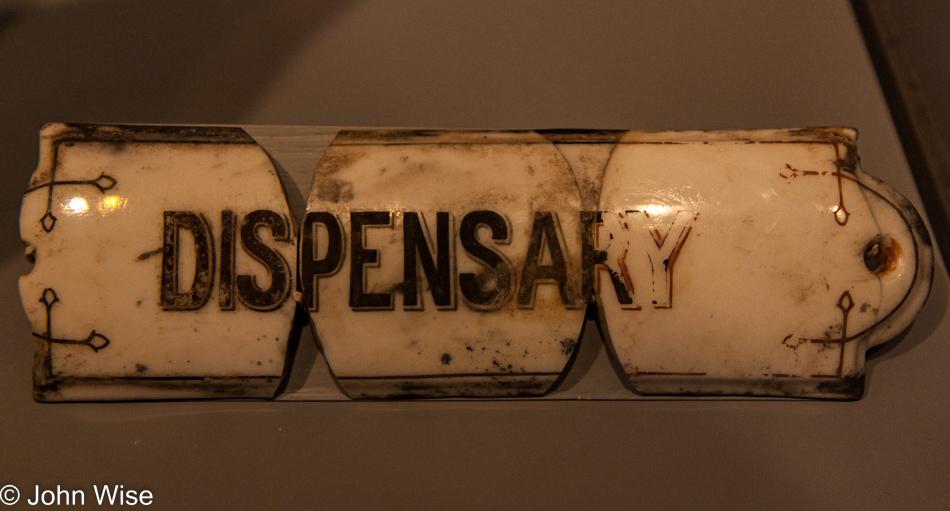
The DeWitt Wallace Decorative Arts Museum is entered through the Public Hospital. This was another item missed when we were here with my mother-in-law earlier this year.
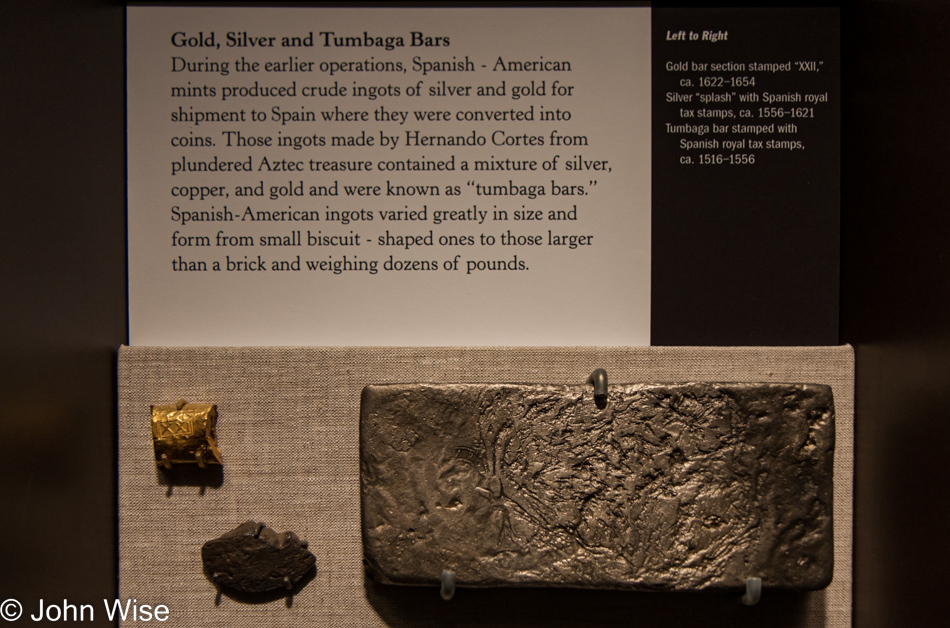
We spent two hours sifting through the exhibits and could have easily spent another few hours had time allowed.
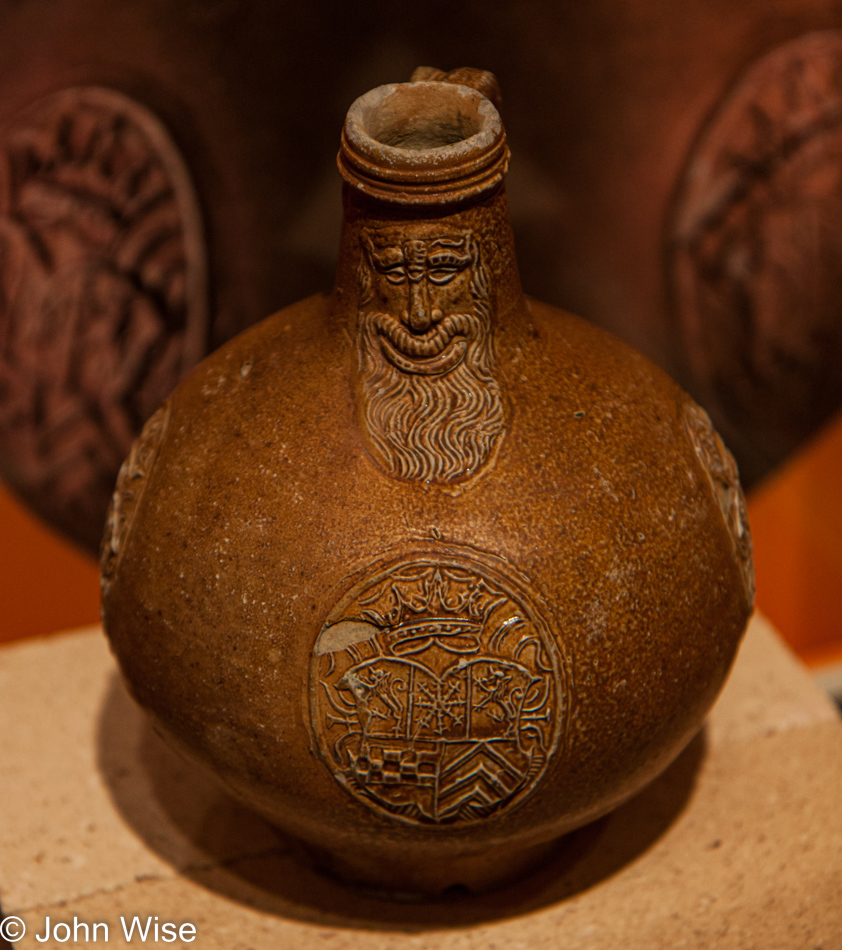
This stoneware jug from either Cologne or Frechen, Germany, was made between 1550 and 1575 and gifted to Adam Winthrop, who gave it to his son John Winthrop, one of the first governors of the Massachusetts Bay Colony. He brought it to America in 1630 after leaving England that year.
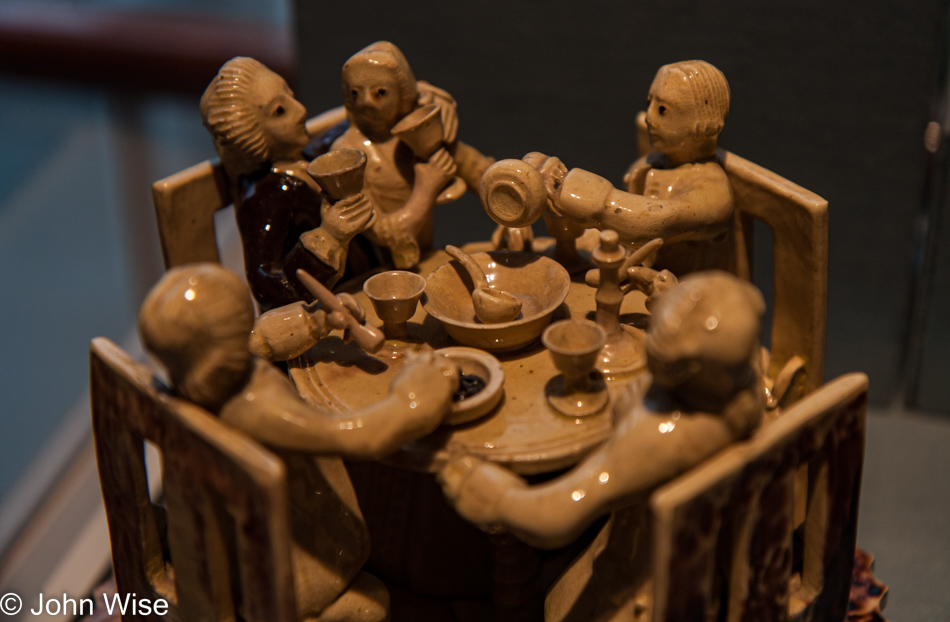
The Abbey Aldrich Rockefeller Folk Art Museum is part of the DeWitt and adds a great sense of the personal creativity from those colonial times that helps round out our museum visit.
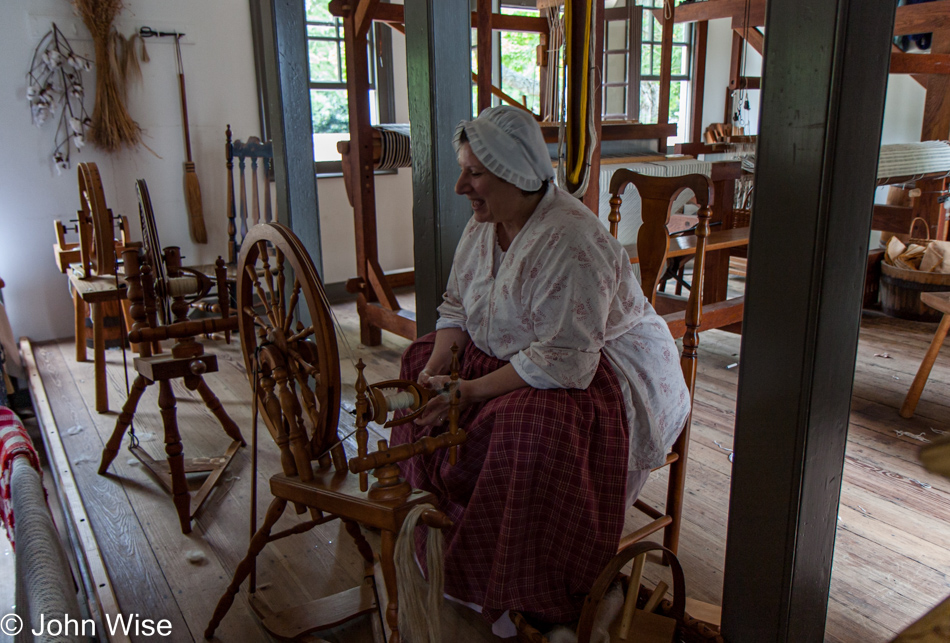
Back on Duke of Gloucester Street we stop at the Weavers Shop and watch a demonstration of spinning fibers to make yarn. This didn’t last long as we were once again hungry and shortly on our way to the King’s Arms Tavern for lunch.
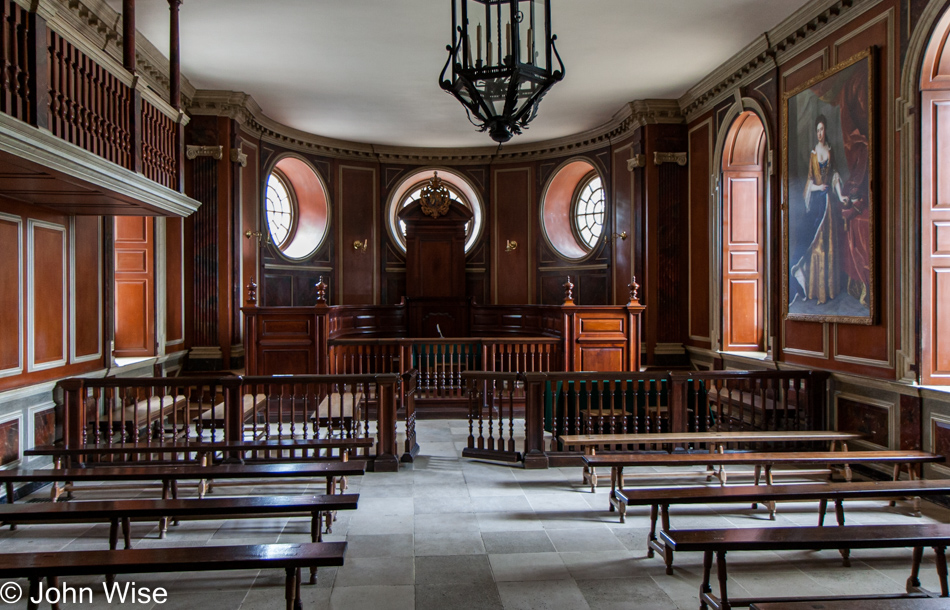
The next stop is at the Capitol Building, where, earlier in the year, we were able to enjoy a harpsichord concert by candlelight. Taking the tours and listening to the guides walk us through the history of the period really helps capture a better feeling for the place we are visiting. Don’t skimp trying to save a few dollars when visiting Williamsburg by listening to some other websites out there that say you can see plenty on your own; the admission pass opens up the history that is on offer here.
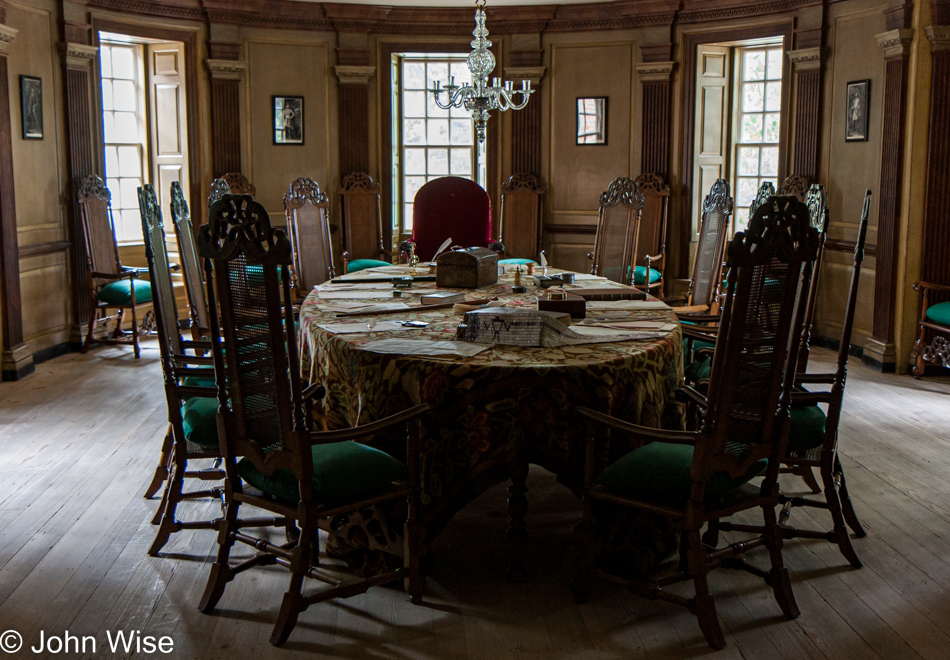
Notes that could have been annotated to my photos sure would have been helpful so I could describe the purpose of this room in the Capitol building.
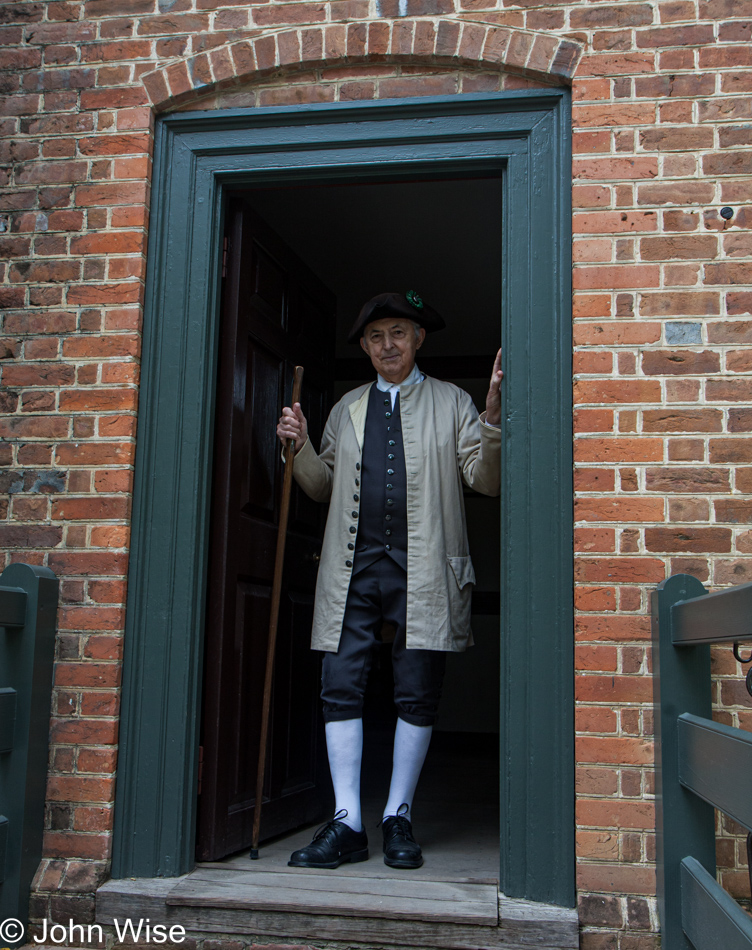
“We are here to negotiate the release of one of your prisoners.”
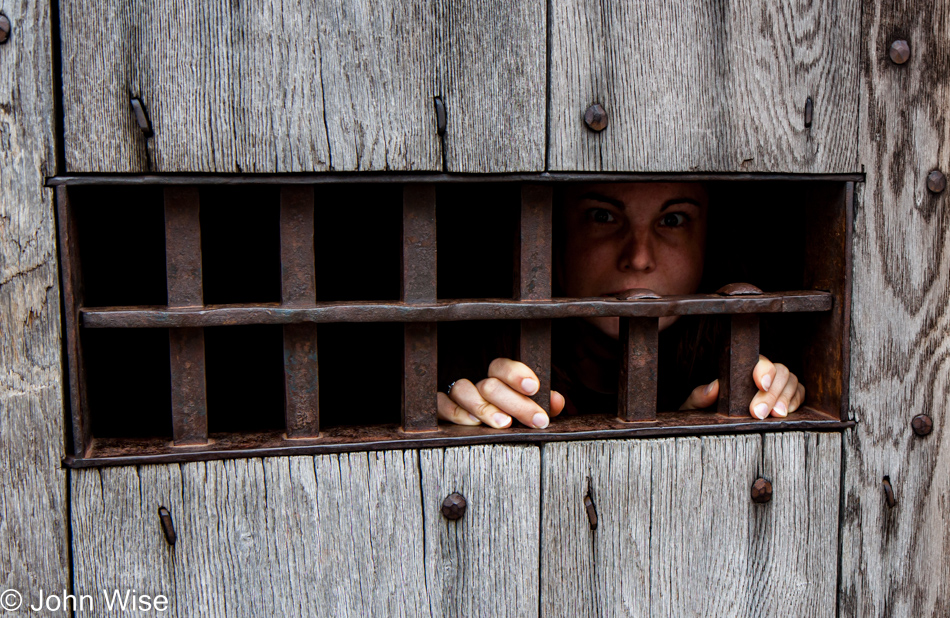
Yeppers, my daughter, ended up in jail. I posted bail, and lucky for her the judge let her off easy. What did she do to deserve this, you ask? She was seen in public kissing fishes; some old law on the books forbids public displays of intimacy with ectothermic piscine life; who knew?
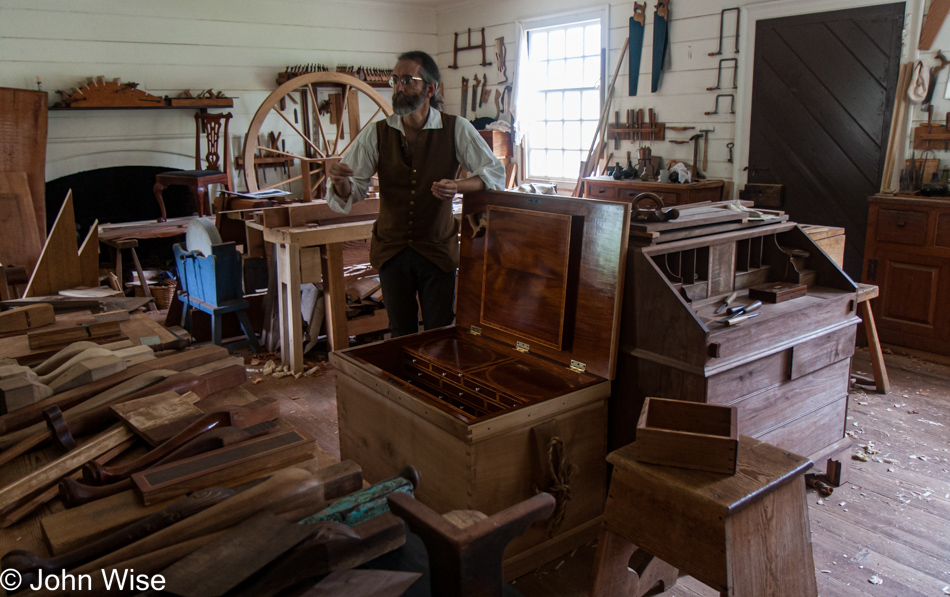
The evening is quickly approaching. We have visited a number of small shops and woven our way through the streets of Colonial Williamsburg.
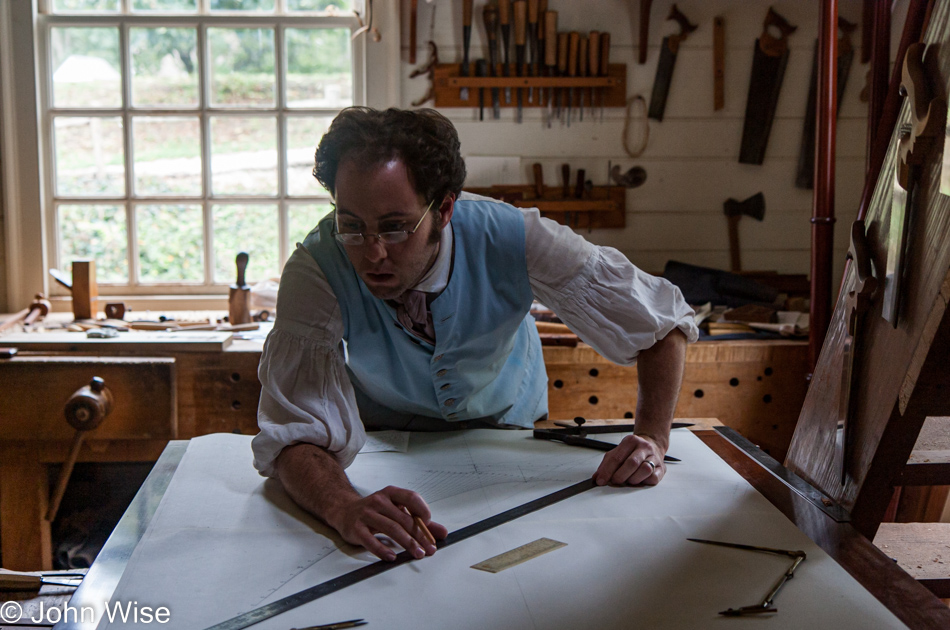
Visiting the draftsman will be the last stop on this leg of the day as we’ll start moving toward our dinner reservation.
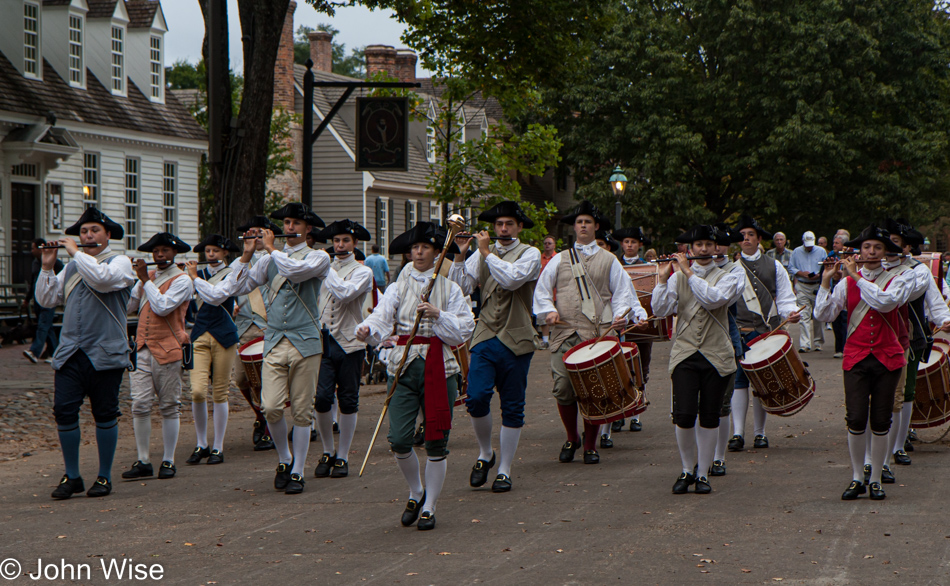
Our feet are beginning to hurt, and hunger is approaching, but still, we are willing to rush from one corner of the historic district to the other end as cannon fire draws our attention back toward the Capitol Building. We arrive at a fife and drum marching band parading up Duke of Gloucester Street. Caroline ran ahead to capture the ceremony on video as Jessica, and I limped along at a snail’s pace before reaching the still-playing band. There is way too much to do here in a mere day.
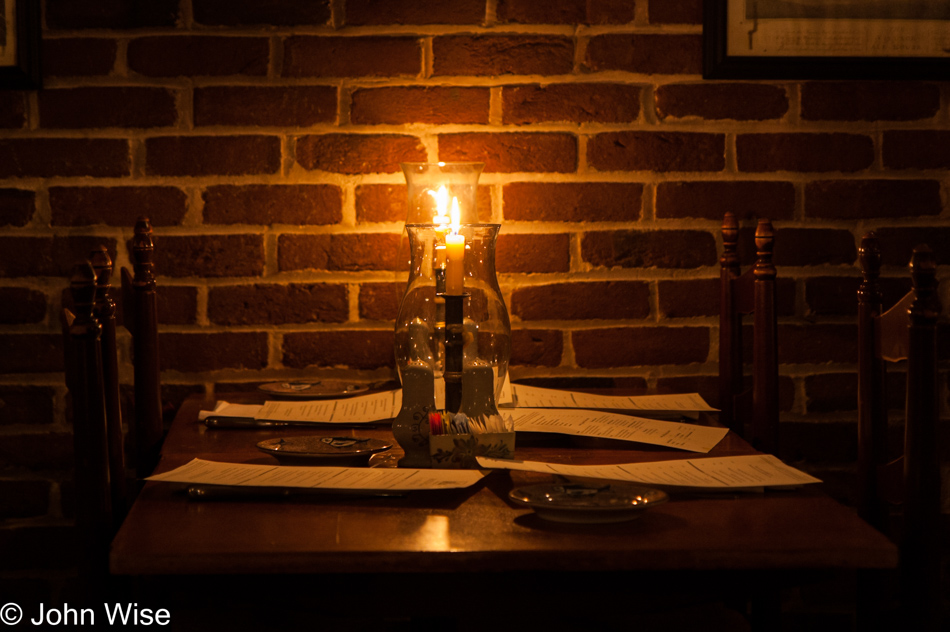
We are sitting down in Shields Tavern for a candle-lit dinner in another historic setting, with staff donning clothing from colonial times.
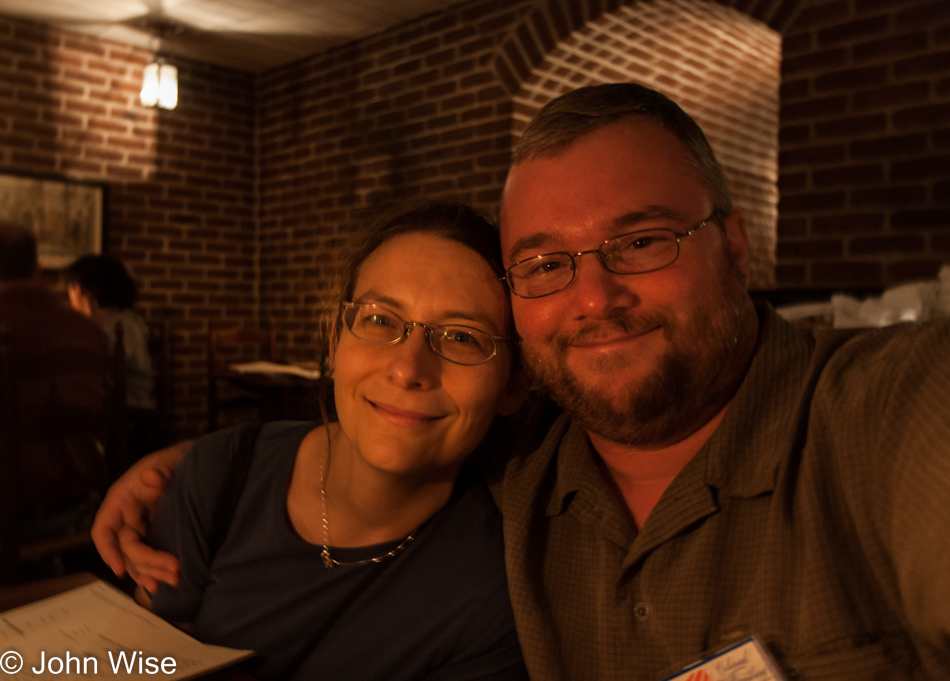
While the food is decent, it is the ambiance and the entertainment that has us wishing that we, too, were dressing for the occasion and not wearing casual 21st-century clothing. Make reservations early for the Taverns, as you could have quite the long wait if you were so daring as to try to get a table at the last minute. After dinner, it was time for an organ concert at Bruton Parish Church, which we thoroughly enjoyed. While the church is located in the middle of Colonial Williamsburg, it is not actually part of it, and anybody can attend services or concerts in this historic church, which was built in 1715, although the parish history dates back to 1660.
Not wanting the day to end after the concert we step into Chowning’s Tavern for some drinks and games. Hot tea all around, we know how to party – not. On a nearby table, some folks are playing a game. We watch, and then the girls grab one as it becomes free. A member of the bar staff is snagged and asked how this works, and in moments, Caroline and Jessica are playing Shut the Box. The game, also known as Canoga and Klackers, originates from at least the 12th century. We sipped our teas, listened to the live music, played more Shut the Box, and with eyes growing ever heavier, we called it a night and walked back to our hotel.
